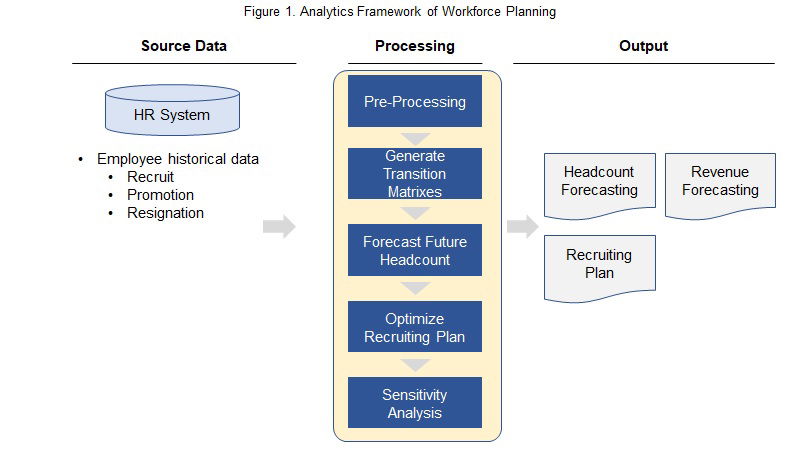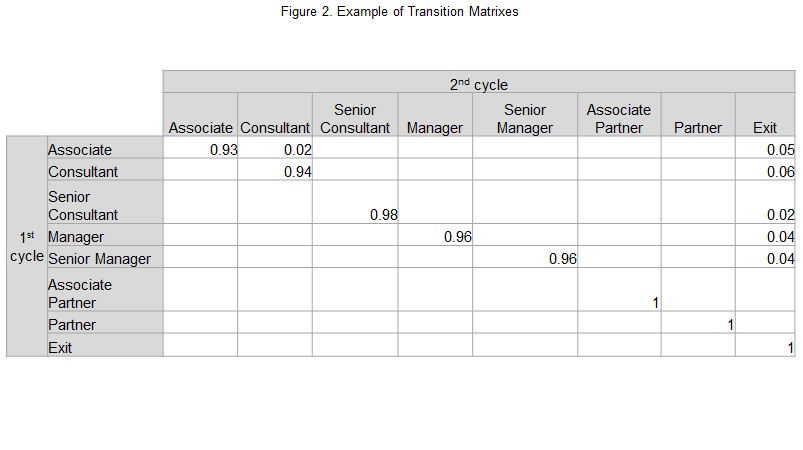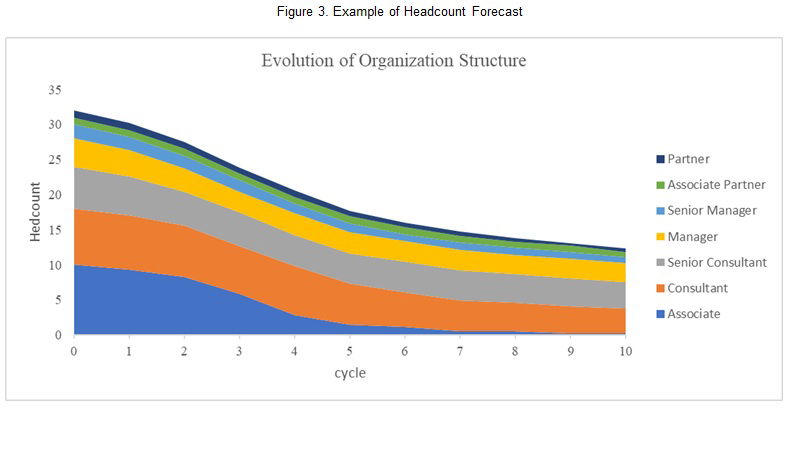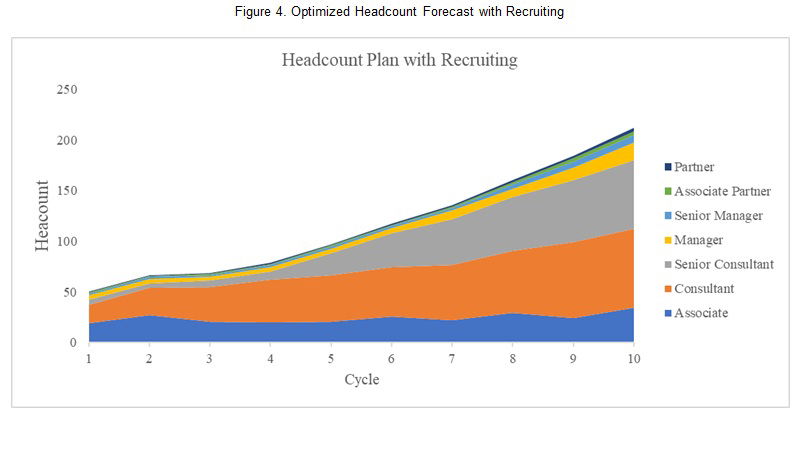Analytics Framework for Workforce Planning

Introduction
In the previous article, I have highlighted three points of view: 1. Workforce planning as strategic planning, 2. Seeing organization as dynamic system of stock and flow of talent and 3. Collect and manage data to capture those dynamics to make better decision.
In this article, I will introduce an analytics framework to implement those three points of view in workforce planning. The framework was explored as part of my capstone project of M.S. in Data Science program. The framework requires historical data of employee’s transitions within the organization such as recruit, promotion, and resignation. This raw data is processed to generate forecast of future headcount and revenue. It is also source data to create planned recruits.

Data source and Pre-Processing
The first step is to collect employee attributes such as the date of recruiting, the start/end date of positioning a job title, and the date of resignation (if the employee had already left). These data will be transformed into a sequence of career transitions by employee. Once this data is ready, it is consumed by the next step: Generate Transition Matrixes.
Generate Transition Matrixes
Once career transition records are ready, a statistical analysis is conducted to estimate Transition Probabilities. Individual history of years to stay in a job title and move to another is aggregated into collective statistics such as ‘Probability to promote to Manager within two years’.
The statistics take a matrix as shown in figure 2. In the row header, all the job titles at the beginning of peformance review cycle are defined. In the column header, the same job titles at the next cycle are defined.
For instance, the below matrix is saying that it is two percent chance to promote from Associate to Consultant from 1st cycle to 2nd cycle. To predict the future state of stock of each job title in an organization, transition probabilities from one job title to another should be estimated from the organizations’ historical data.

Forecast Future Headcount
The next step is to forecast future headcount from the initial number of employees in each job title. This step will help you to foresee what your future team will look like in terms of size and pyramid structure. Future size of job title can be estimated by multiplying initial head count by transition probabilities. The output will look like Figure 3.

Optimize Recruiting Plan
As shown in Figure 3, most organizations are shrinking over time because people are leaving across their career journey. Here, you are reminded of the critical importance of recruiting.
In this step, the number of required recruits for each job title is calculated. This calculation will be done by basic Operations Research method. Operations Research requests you to define Objective Function and Constraints to solve the optimized number of recruits.
The objective function in this framework will be revenue growth for the future years (I assume five years planning horizon in the articles) You also need to give constraints such as a maximum number of recruits per cycle and allowable ratio of junior to managers.
With these inputs, the method will produce two pieces of information:
- Recruiting Plan which indicates how many people should be recruited by job title for each cycle
The right mix of recruits and organic promotions will keep your organization structure steadily growing - Forecasted revenue derived through solving the Operations Research model
The revenue amount is based on headcount and its fixed billable amount.

Sensitivity Analysis
This step is not mandatory exercise, but recommended to perform. You can perform sensitivity analysis to identify variables that have effect on optimal solution in the Operations Research problem.
For example, suppose you obtained 300 % revenue increase in five years through the previous step, but it doesn’t satisfy your financial objective. You can loosen the constraint of allowable number of recruits and check if this change will push the revenue growth to the expected level. If any change of constraints would achieve higher objective, you can discuss with senior management to allocate more resources.
Conclusion
As we have gone through high level descriptions of analytics framework, collecting and managing workforce data will add value to your firm’s strategic planning. The reliable metric of promotion or resignation rate will give concrete prescriptions of talent acquisitions.
However, you might be skeptical about the feasibility of the framework. I will dive into technical explorations of each step in the further articles. Anyway, I love to hear your questions or critique on my discussion.